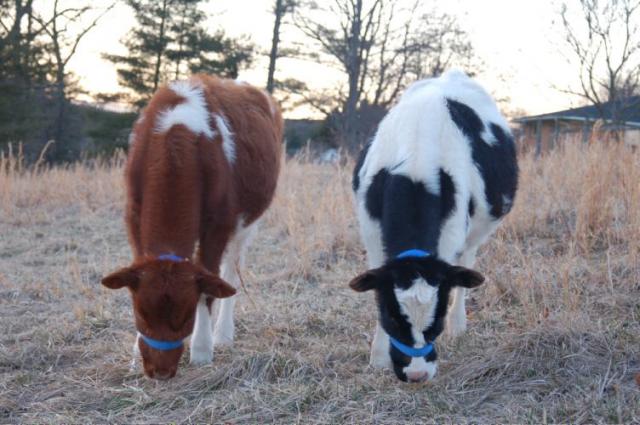mysunwolf
Herd Master
Wasn't too sure where to post this. We have 2 young heifers, about 7 months old, who we bought a few months ago--one's a Holstein and one's a Holstein/Shorthorn X. When we got them they were eating about 1/4 bale hay a day between them, plus a little grain for treats when we have visitors or we can to get them used to being touched on their teats. The Holstein had a big round belly when we adopted her, the woman told us from grain. Well, we have definitely not been giving much grain, a handful every couple of days. Now the Holstein/Shorthorn is starting to get a belly. This is not bloat, it looks more like pregnancy, though that's not really even possible because they weren't with a bull.
What's the cause of the fat bellies? Is the hay too rich? We're still at 1/4 of a bale and I know that's not enough for these girls, but they are so fat I can't imagine feeding them more! We are just starting to get fresh green grass in the pasture. Could they be feeding themselves on this?
Here's a photo of them:

I'll try to get some better pictures of their bellies so you can see just how huge they are.
What's the cause of the fat bellies? Is the hay too rich? We're still at 1/4 of a bale and I know that's not enough for these girls, but they are so fat I can't imagine feeding them more! We are just starting to get fresh green grass in the pasture. Could they be feeding themselves on this?
Here's a photo of them:

I'll try to get some better pictures of their bellies so you can see just how huge they are.
